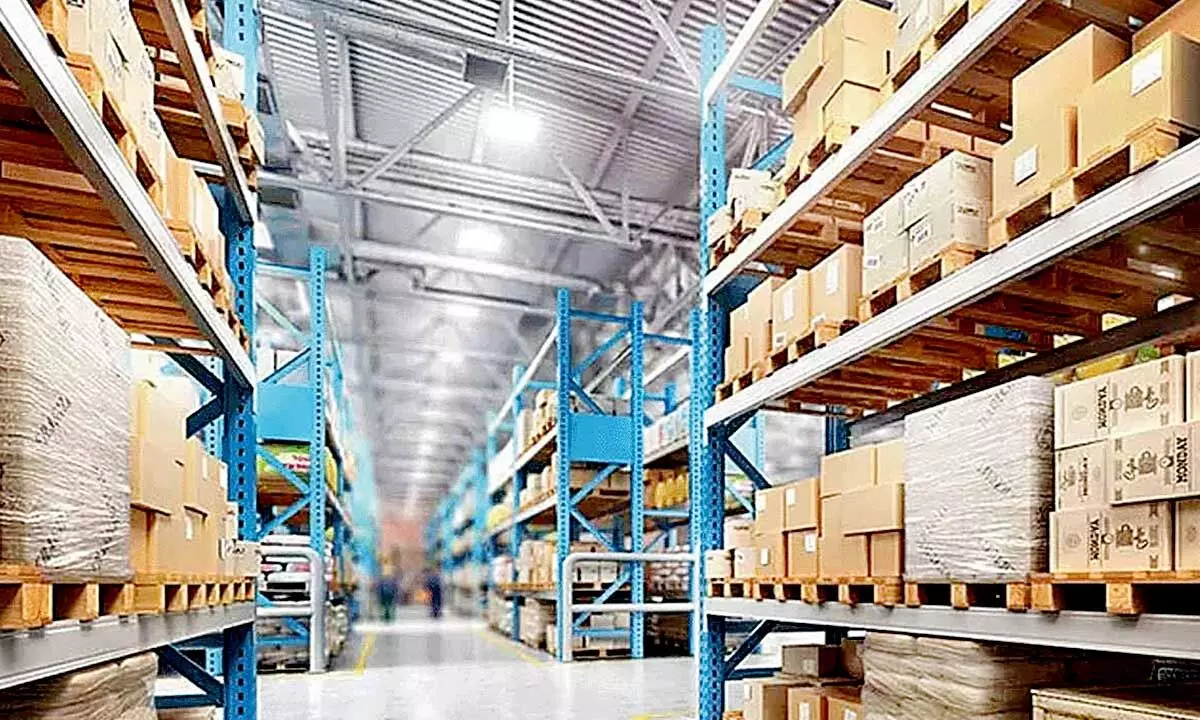Industrial warehousing to lead next phase of growth
The industrial and warehousing space in India is expected to rise to 304 mn sq ft in 2022 and further rise to 345 mn sq ft in 2023, says Savills India report
image for illustrative purpose

To capitalise on this opportunity as well as to become competitive in the international markets in exports, India has been working to reduce logistics cost which was about 14 to 16% of the GDP to 8%. While there has been a marked improvement in port handling, a reasonably priced storage/warehousing facility and transport infrastructure holds key to achieving this target
Warehousing has emerged as a preferred asset class at a time when investors have mostly exited the residential real estate market due to lack of adequate returns and looking for alternate modes of investment.
According to a report by Savills India, the industrial and logistics warehousing sector witnessed investments of more than $1.5 billion in 2021, making it the highest among real estate asset class to attract investment followed by office segment.
The focus on warehousing comes at a time of boom in the retail as well as e-commerce sectors.
With brands going in for asset light models and outsourcing manufacturing, supplies/deliveries to third parties, the need for logistics and warehousing facilities have gone up in many folds.
In 2021 over 4,200 acres of land was used for making space for warehouses and this number is expected to grow this year.
As per Savills India report the industrial and warehousing space in India is expected to rise to 304 million sq ft in 2022 and further rise to 345 million sq ft in 2023. As per a recent report by industry chamber FICCI & real estate consulting firm Anarock, the market size of retail in India currently estimated at $705 billion is projected to grow to more than $ 1. 8 trillion by 2030.
Similarly, the e-commerce market in India is likely to grow to $120 billion by 2026 from $38 billion estimated in 2021. Covid-19 has also accelerated the growth of e-commerce across India even in Tier-II and Tier-III cities. The easy availability of internet at affordable rates, mostly made possible by Jio has led to people to buying online increasingly. To serve the consumers of Bharat effectively ,warehousing and logistics players have followed them moving beyond Tier-I cities. Last year 20 per cent of all warehousing space created was in tier II and Tier III cities which indicates the trend.
The emergence of quick commerce has also fuelled demand for warehousing at close proximity to demand centres. The overall business opportunity has attracted many institutional as well as corporate houses to invest in this asset class. The constant push and ambitions for infrastructure development and policy support provided by the government may ride the next wave of growth for the industrial, warehousing, and logistics sectors in India, according to the FICCI-Anarock report.
The government's slew of measures such as the Gati Shakti Program, GST, National Manufacturing Policy, Self-Reliant Campaign, Land Reforms, and Tax Reforms to provide necessary infrastructure and policy support to boost the manufacturing sector across the country will give a boost to industrial warehousing. It will be aided by the China plus one strategy for manufacturing adopted by almost all multinational corporations to deal with supply chain disruptions as seen during the pandemic.
These MNCs are now looking to shift their base from China or are keen to open a new manufacturing facility in other countries such as India. To capitalise on this opportunity as well as to become competitive in the international markets in exports, India has been working to reduce logistics cost which was about 14 to 16 per cent of the GDP to 8 per cent. While there has been a marked improvement in port handling, a reasonably priced storage/warehousing facility and transport infrastructure holds key to achieving this target.
(The Author is a Mumbai based senior journalist)

